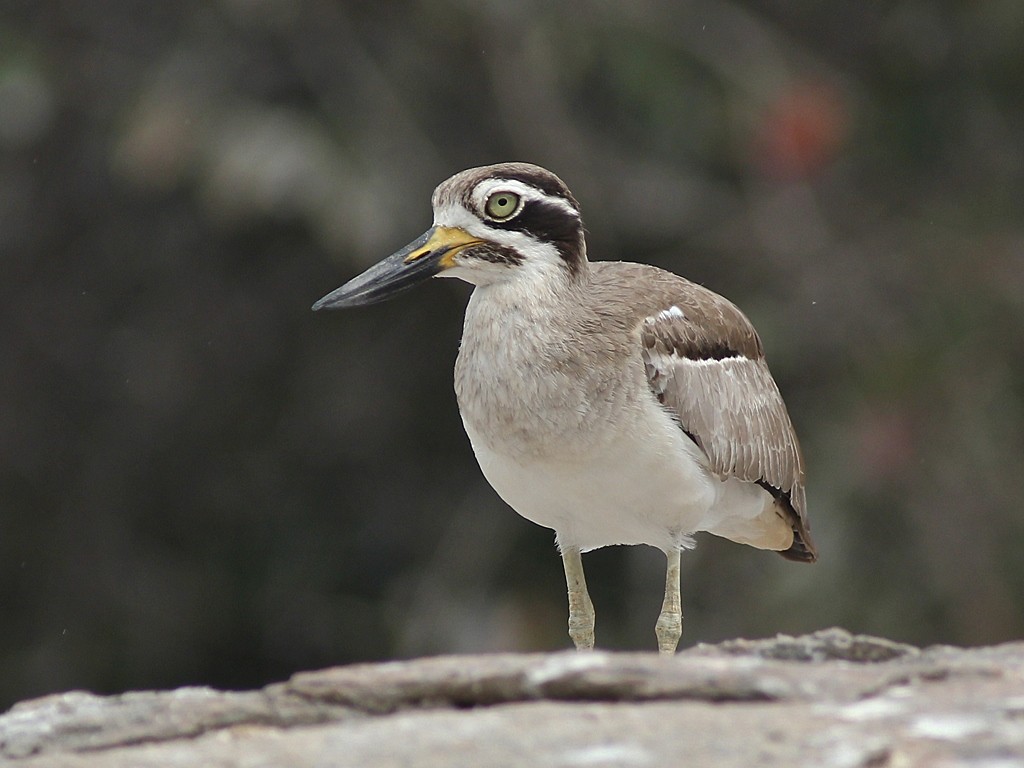Great Stone-curlew
A species of Greater Thick-knees Scientific name : Esacus recurvirostris Genus : Greater Thick-knees
Great Stone-curlew, A species of Greater Thick-knees
Botanical name: Esacus recurvirostris
Genus: Greater Thick-knees
Content
Description General Info
Description
The great thick-knee is a large wader at 49–55 cm, and has a massive 7 cm bill with the lower mandible with a sharp angle giving it an upturned appearance. It has unstreaked grey-brown upperparts and breast, with rest of the underparts whitish. The face has a striking black and white pattern, and the bill is black with a yellow base. The eyes are bright yellow and the legs a duller greenish-yellow. In flight, the great thick-knee shows black and white flight feathers on the upperwing, and a mainly white underwing. Sexes are similar, but young birds are slightly paler than adults. 
Size
54 cm
Nest Placement
Ground
Feeding Habits
Great Stone-curlew primarily feeds on crabs and crustaceans, occasionally consuming insects, reptiles, and small fish. Known for foraging after dusk using its large, upcurved bill to pry up stones, great Stone-curlew exhibits deliberate hunting techniques. Occasionally engages in kleptoparasitism. Typically found solitary or in pairs, sometimes in groups.
Habitat
The great Stone-curlew is commonly found in habitats featuring riverbed shingle and rocks, as well as stony banks and mudflats typically surrounding large lakes. They prefer environments with little to no sand and may occasionally inhabit grassy flats during river flooding. They are infrequently seen on coastal beaches, sandy flats, tidal estuaries, and saltpans, primarily residing in the coastal districts of dry regions.
Dite type
Piscivorous
General Info
Feeding Habits
Bird food type
Species Status
Not globally threatened.
Scientific Classification
Phylum
Chordates Class
Birds Order
Shorebirds Family
Stone-curlews Genus
Greater Thick-knees Species
Great Stone-curlew 